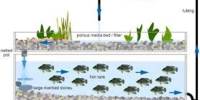Major economic losses are a result of plant illnesses brought on by bacteria, viruses, and fungi every year. The early discovery of these illnesses is crucial for containing their spread and minimizing agricultural harm, but it is extremely difficult, particularly in regions with large-scale production.
Artificial intelligence (AI) models embedded in video surveillance are used by smart agriculture systems to identify the characteristics of plant illnesses, which frequently show changes in the morphology and appearance of leaves.
Nevertheless, traditional approaches to picture classification and pattern recognition extract characteristics of ill plants from a training sample. As a result, they are difficult to understand, making it difficult to pinpoint which aspects were learned.
Further, obtaining large datasets for model training is tedious. A workable answer to this issue is to choose handcrafted features based on feature detectors, descriptors, and language that have been established by experts. These, however, frequently lead to the inclusion of pointless features, which impair algorithm performance.
Fortunately, a solution is now on the horizon. A swarm intelligence algorithm for feature selection (SSAFS) has been created by a group of data scientists and specialists in plant phenomics from China and Singapore to enable effective image-based plant disease identification. In their most recent paper, which was published in Plant Phenomics, they reported on the creation and validation of this method.
One of the crucial contributions of this work to plant phenomics is the definition of handcrafted features and the precision screen of relevant features through a novel computational approach. We propose to combine comprehensive handcrafted and non-handcrafted features of plant images for accurate and efficient detection in the field of phenomics.
Professor Zhiwei Ji
Explaining the benefits of introducing SSAFS, the corresponding author of this study, Prof. Zhiwei Ji, comments, “SSAFS not only significantly reduces the count of features, but also significantly improves the classification accuracy.”
The study combined two concepts: computer vision, which extracts visual features indicative of a particular state, and high-throughput phenomics, which enables large-scale analysis of plant properties like disease severity. Using SSAFS and a set of plant images, the researchers identified an “optimal feature subset” of plant diseases.
This subset included a list of just the most important characteristics that may reliably identify a plant as sick or healthy and further gauge the severity of sickness. Six plant phenomics datasets and four UCI datasets were used to examine the effectiveness of SSAFS. These datasets were also utilized to assess how SSAFS performed in comparison to five other related swarm intelligence techniques.
The results show that SSAFS performs effectively in identifying plant diseases and estimating their severity. In fact, it did better at locating the most beneficial handcrafted image features than the most recent state-of-the-art algorithms.
It’s interesting to note that most of these disease-related characteristics were local, involving distinct patterns or structures like points, edges, and patches that are frequently seen in sick plants.
Overall, this method is a useful tool for assembling the best set of manually drawn image characteristics suggestive of plant illnesses. Adoption might greatly increase the accuracy of plant disease detection and shorten the processing time needed.
When asked about the future implications of their study, Prof. Ji comments, “One of the crucial contributions of this work to plant phenomics is the definition of handcrafted features and the precision screen of relevant features through a novel computational approach. We propose to combine comprehensive handcrafted and non-handcrafted features of plant images for accurate and efficient detection in the field of phenomics.”
















